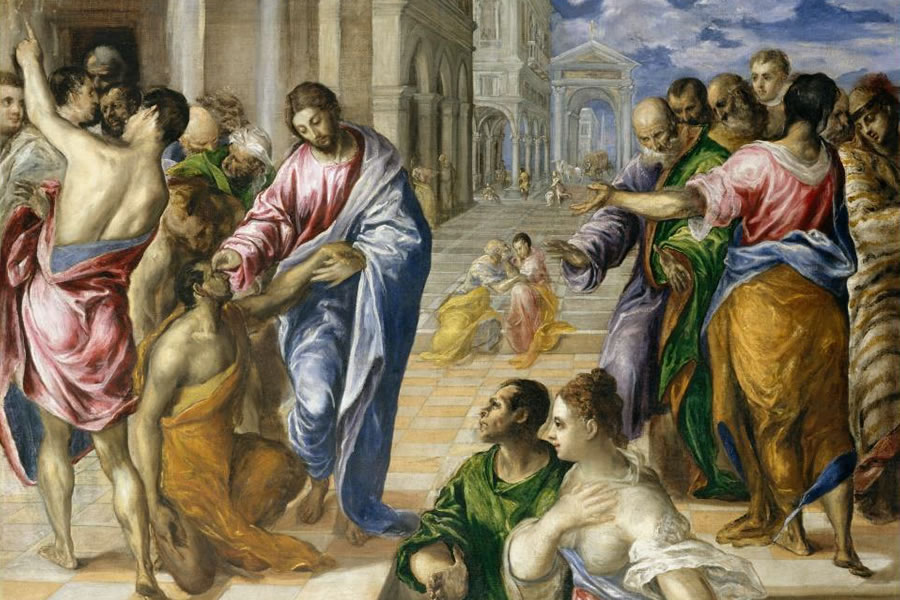
"The Man Born Blind"
by Dr. Larry Fraher, Ph.D. | 03/18/2023 | Images of FaithEl Greco’s masterpiece, Christ Healing the Blind, clearly portrays much of the story that we hear in today’s Gospel. Painted about 1570, the artist, a Catholic seeking to further the agenda of the Catholic Church in response to the Reformation, helps the viewer to know the primacy of Christ as he incorporates aspects from stories of healing the blind, not just from the Gospel of John, but also from Gospels of Matthew and Luke. Through his composition, we are presented with a visual call to let go of our vision, to see Christ, and to know that the Son of God comes to create sight in us.
The image is striking for its classical detail and depiction. In the traffic outside of the temple, El Greco paints Christ at the center-left of the composition as he lays the mud created from dirt and his own spittle on the blind man’s eyes. In the central background are two others that had been cured by Christ, reminding the viewer that Christ gives sight. On the right, the disciples debate the causes of the man’s blindness, while on the left, the Pharisees and Sadducees question the man, now healed, who stands with his back to the viewer, pointing them to the truth of Christ. In the foreground are the blind man’s parents. El Greco painted three versions of this work. Interestingly, this version is the only one that appears to have the dark, almost ghostly, figure looming over the man who was blind from birth. In the vitriol of the Reformation and the Catholic response, this figure can be understood as the temptation to move away from the Church, see the convenience of the faith of the culture of the day, and to not see Christ for who He truly is.
The image speaks to us. Our lives are busy, like this scene outside the Temple, we run in various groups, discussing a variety of things, sometimes very passionately. All the while, the presence of God is among us. Too often, however, we see that presence according to our vision and not as in the reality of God’s love. We are invited to rely on Christ to create sight in us. Blinded by our own opinions and ideas, we believe that we ‘see’ when, in fact, we see what we want, rather than what God has intended. A significant aspect of the story is the fact that the man was blind from birth. He must rely on Christ; the Word of God who created Adam from the clay of the Earth, who now creates eyes for the one who did not have them. The story challenges us: How am I allowing Christ to work in my life? Do I let Christ dictate my vision, or am I distracted by the busy-ness of culture and the world? To whom do I give credit for my faith and life? Do I, like the man born blind, point to Christ in all that I do?
BACK TO LIST BACK